Greenhouse farming in Nigeria is an excellent way to produce fresh fruits and vegetables all year round. Greenhouse farming protects crops from the environment using a structure made of materials that allow sunlight and other radiation to pass through but limit the loss of heat. Greenhouses allow farmers to grow crops year-round, regardless of the weather conditions outside.
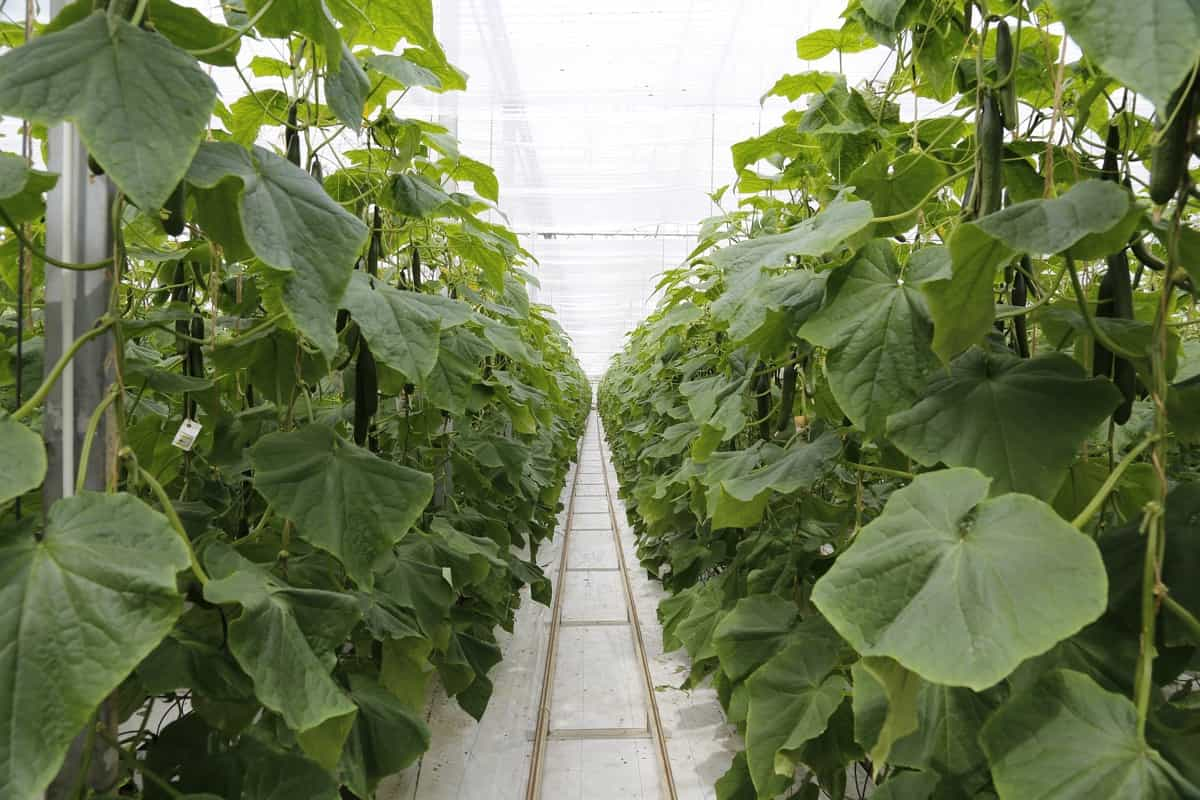
How to start greenhouse farming in Nigeria
What is greenhouse farming?
It is an agriculture sector where crops are grown in an enclosed environment. Greenhouse farming in Nigeria is a new concept, but it has the potential to revolutionize agriculture in the country. Greenhouse farming requires less water than traditional farming methods, and the enclosed environment can help to conserve water. This is especially important in Nigeria, where water resources are scarce.
Greenhouse farming tips for beginners in Nigeria
- The first step is to choose a suitable location for your greenhouse farm. The location should be close to a water source and have access to sunlight.
- Once you’ve chosen a location, you must build the greenhouse structure. There are different greenhouses types available on the market, so make sure you choose one that’s right for your needs.
- After the greenhouse structure has been built, the next step is soil preparation inside it for planting. This involves adding nutrients and ensuring that the soil has the right pH.
- Once the soil is ready, you can start planting your crops. Make sure you choose plants suited to being grown in a greenhouse environment.
- Greenhouse farming in Nigeria is planting and growing crops in an enclosed environment. The main advantage of greenhouse farming is that it allows farmers to environment control in which crops are grown.
- Farmers can protect crops from pests, diseases, and extreme weather conditions. Greenhouse farming is becoming increasingly popular in Nigeria as more farmers realize its benefits.
- Finally, you must carefully monitor your greenhouse’s environment and make adjustments. This includes controlling temperature, humidity, and ventilation levels.
In case you missed it: How to Start Dairy Farming in Nigeria: Business Plan, Breeds, Cost, Profit, and Schemes
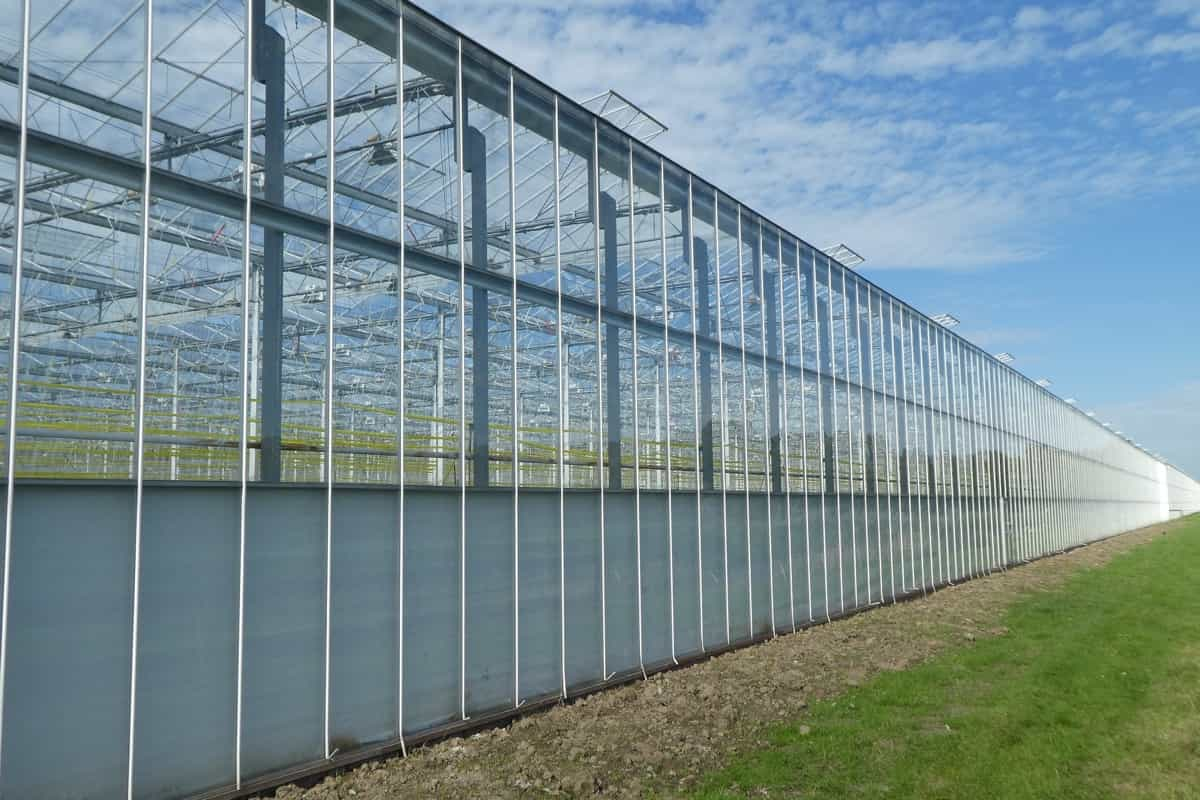
Greenhouse vegetable production in Nigeria
It is a rapidly growing industry. The country has a large population and a rapidly growing economy, making it an attractive market for greenhouse farmers. Nigeria also has a climate conducive to greenhouse farming, ample sunlight, and rainfall. The Nigerian government has supported the greenhouse industry’s growth, providing farmers with subsidies and tax breaks. This has helped spur the industry’s growth, with more farmers setting up greenhouses and increasing production.
The government is also improving infrastructure, such as roads and power supply, which will further boost the sector’s development. There are currently around 1,000 hectares of greenhouse farmland in Nigeria, with most farms located in the northern part of the country. The main vegetables grown in greenhouses are tomatoes, cucumbers, peppers, and eggplants. These crops are in high demand from both local and export markets.
Tomatoes are the most widely-grown crop in Nigerian greenhouses, accounting for almost 60% of total production. Cucumbers are the second most popular crop, followed by peppers and eggplants. Farmers are using modern techniques and inputs to improve yields and quality. For example, hydroponic systems grow crops in nutrient-rich water. This allows for higher yields and a shorter growing season.
Benefits of greenhouse farming in Nigeria
- Greenhouse farming in Nigeria has several benefits over traditional farming methods. The most obvious benefit is the increased yield achieved with greenhouse farming. With the controlled environment of a greenhouse, crops can be grown year-round, meaning a greater harvest is possible.
- Another benefit of greenhouse farming is the reduction in water usage. In a traditional farm, much water is lost to evaporation and runoff. However, in a greenhouse, the water used to irrigate the plants is recycled and reused, meaning less water is needed overall. This is especially important in areas where water resources are limited.
- Greenhouses also protect crops from extreme weather conditions, pests, and diseases. The controlled environment of a greenhouse means that farmers can more easily control these factors, leading to healthier plants and higher yields.
Is greenhouse farming profitable in Nigeria?
Greenhouse farming can be a very profitable business in Nigeria. There are different factors to consider when starting a greenhouse farm, such as the type of crop you want to grow, the climate, and the market for your product. If you are planning on starting a greenhouse farm in Nigeria, it is important to research the market for your product.
Find out what crops are in demand and what prices they are fetching. You will also need to consider the climate when choosing your location. The weather in Nigeria can be unpredictable, so it is essential to choose a location with stable weather patterns. With proper planning and execution, starting a greenhouse farm can be a very profitable endeavor.
How does greenhouse farming work?
Firstly, you must obtain a permit from the Nigerian Agricultural Ministry. Second, you will need to purchase or build a suitable greenhouse. And third, you will need the right skills and knowledge to grow crops successfully in a controlled environment.
In case you missed it: How to Buy Agricultural Land in Nigeria
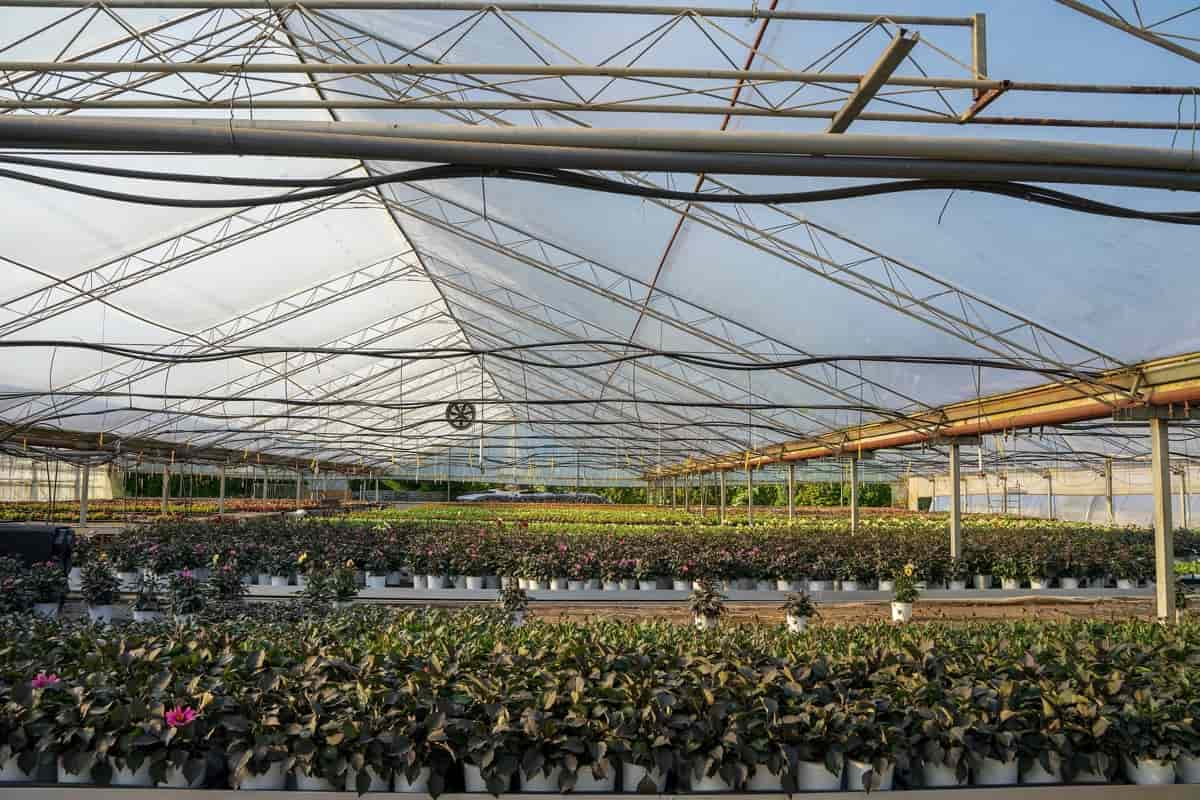
Types of greenhouses in Nigeria
Plastic Greenhouse
This is built with a plastic sheet. It is the common type of greenhouse in Nigeria. The sheet prevents elements of the weather from affecting the crops in the greenhouse. The most common greenhouse type in Nigeria is the plastic tunnel greenhouse. These greenhouses are relatively cheap and easy to construct, which makes them popular among small-scale farmers. However, they can be vulnerable to high winds and are not very durable in the long term.
Glass Greenhouse
This is covered with glass. It is a common greenhouse type in the Netherlands and other temperate countries. Glass greenhouses are the most expensive option but offer the best protection for your crops from the elements. They are also easy to ventilate and keep cool in hot weather.
Dome-Shaped Greenhouse
This has a dome shape. The shape makes it appropriate for some places. These are the most expensive but durable options and offer the best protection from the elements.
Top states for greenhouse farming in Nigeria
Nigeria’s top greenhouse farming states are Kaduna, Kano, Katsina, and Sokoto. These states have the ideal climate for greenhouse farming, with high temperatures and plenty of sunlight. The soil in these states is also suitable for greenhouse farming, as it is rich in nutrients and can retain moisture.
What to grow in a greenhouse in Nigeria?
Greenhouse farming can produce various fruits, vegetables, and flowers. In Nigeria, some common crops grown in greenhouses include tomatoes, peppers, cucumbers, and roses. Greenhouse farming can be an important tool for small-scale farmers who want to improve their yields and income.
Some common crops grown in greenhouses in Nigeria include Tomatoes, Cucumbers, Sweet Peppers, and Eggplants. These crops require little water and can tolerate high temperatures. Other popular choices include Beans, Okra, and Squash. These vegetables do best in a cooler climate with ample water availability. Other plants that can be grown in greenhouses in Nigeria include:
| Aubergines | Chinese cabbage |
| Eggplants | Coriander |
| Sweet corn | Parsley |
| Broccoli | Arugula |
| Cauliflower | Habenero peppers |
Nigeria is one of the largest greenhouse growers in the world. The country has a large number of smallholder farmers who grow a variety of crops in greenhouses. These farmers typically use traditional methods, such as manual labor and simple tools. However, some large-scale commercial greenhouse growers are beginning to adopt more modern methods, such as hydroponics and automated systems.
In case you missed it: 16 Key Rules for Effective Greenhouse Farm Management: From Planning to Reducing Production Cost
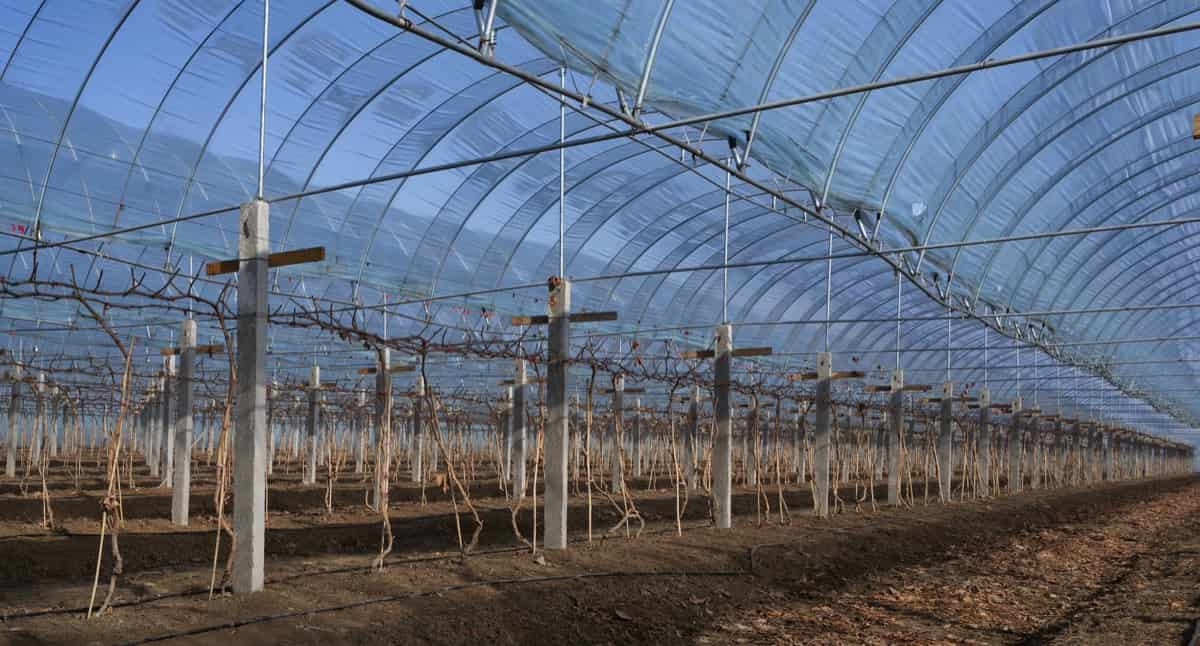
These growers produce many crops, including tomatoes, cucumbers, peppers, and eggplants. The Nigerian government is encouraging the growth of the greenhouse industry by providing subsidies and tax breaks to farmers. In addition, the government is investing in research and development to improve greenhouse technology.
Greenhouse crop production in Nigeria
Greenhouse farming in Nigeria is a new and exciting way to produce crops. Farmers can grow crops year-round and protect them from pests and diseases by using a controlled environment. This type of farming is especially well suited to Nigeria, where the climate is hot and humid. Greenhouse crop production in Nigeria has many benefits. For one, it allows farmers to grow plants all year round, which is impossible with traditional outdoor farming. Farmers can get two or even three crops annually, which greatly increases their income.
In addition, greenhouse farming protects crops from pests and diseases, which are common in Nigeria. Finally, greenhouse farming uses less water than traditional farming, which is important in a country with limited water resources. Firstly, you will need to build a greenhouse. Second, you must purchase seeds or seedlings from a reputable supplier. And third, you will need basic knowledge of how to care for your plants. With a little effort, you can start on your way to becoming a successful greenhouse farmer in Nigeria.
Cost of building greenhouse farming in Nigeria
- The size of the greenhouse – Greenhouses can range in size from small backyard models to large commercial operations. The cost of building a greenhouse will depend on the size you need.
- The materials used – Greenhouses can be made from wood, metal, and plastic. The material type you choose will affect the cost of construction.
- The location of the greenhouse – The cost of land and building permits can vary depending on where you want to build your greenhouse.
- The type of climate control system you need – Depending on the climate in Nigeria, you may need to invest in a heating or cooling system for your greenhouse. Then, this will add to the overall cost of construction.
- The type of crops you want to grow – Some crops require more space or special growing conditions. This can impact the size and type of greenhouse you need and the equipment you’ll need to purchase.
The cost of about 240 square standard greenhouse systems in Nigeria goes between N2 million and N2.5 million.
Steps to starting a greenhouse business plan in Nigeria
- Decide what type of greenhouse business you want to start. There are many different types of greenhouses, so it’s important to select the one that best suits your needs.
- Research the climate in Nigeria and the type of plants that grow best. This will help you determine what type of greenhouse you need to build and what plants you can grow.
- Find a suitable location for your greenhouse business. The location should be close to a water source and have good drainage.
- Draw up a business plan and consider the costs of building and running the greenhouse and the potential income from selling the plants growing inside it.
- Apply for any necessary licenses or permits from the Nigerian government before starting construction on your greenhouse.
- Build your greenhouse using high-quality materials to withstand the harsh Nigerian climate. Please ensure the structure is strong and secure so it doesn’t collapse in heavy rains or windstorms.
- Install an irrigation system to water your plants easily and efficiently.
- Fill your greenhouse with soil and plant your chosen crops, making sure to space them out properly, so they have enough room to grow.
In case you missed it: Greenhouse Farming in Kenya: How to Start, Crops, Construction Cost, Profits, and Subsidy
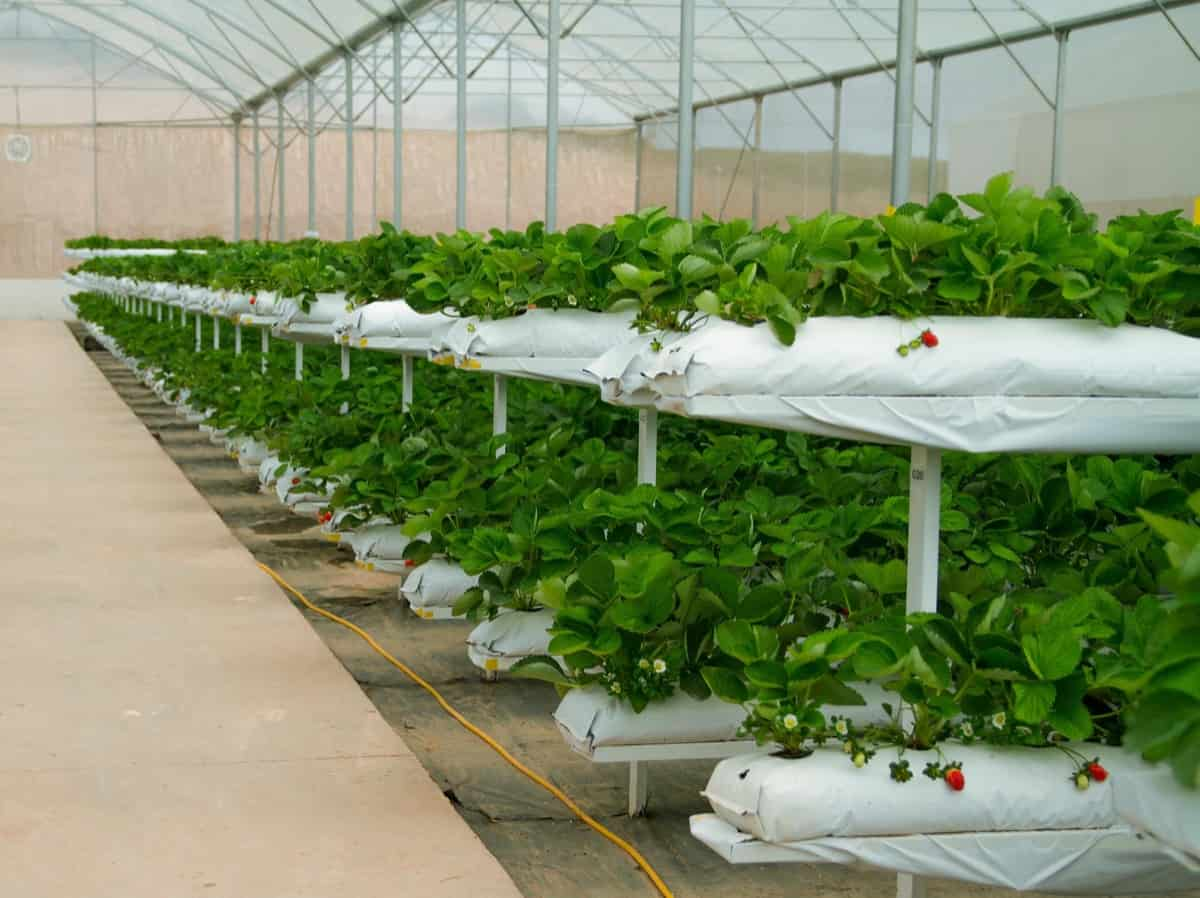
Opportunities in greenhouse farming in Nigeria
- Greenhouse farming in Nigeria is a relatively new concept with great potential. There are many opportunities for those interested in greenhouse farming to get involved in this rapidly growing industry.
- Nigeria is a large country with a population of over 180 million people. The climate is tropical, which is ideal for greenhouse farming. The country has a large amount of arable land, but only a small percentage is currently used for agriculture. This leaves a lot of room for growth in the sector.
- The Nigerian government supports agriculture and has implemented policies to encourage investment in the sector. Incentives are available for those who want to set up greenhouses, and there are tax breaks for agricultural businesses. There is a growing demand for fresh produce from consumers and the hospitality industry in Nigeria. This creates a good market for greenhouse farmers to sell their products.
- Greenhouse farming offers many benefits over traditional farming methods. Farmers can get more harvests yearly, and crops will not be lost to bad weather conditions.
- Water usage can also be controlled better in greenhouses, which helps to conserve this valuable resource. Pest and disease control is easier in greenhouses, too, as they can be isolated from the outside environment.
Greenhouse subsidy in Nigeria
The Government of Nigeria is committed to developing the country’s agricultural sector and promoting greenhouse farming to achieve food security. To encourage the adoption of this technology by farmers, the government provides a subsidy on the cost of constructing a greenhouse. The subsidy is available to any farmer who wishes to construct a greenhouse on their farm.
The subsidy will cover up to 50% of the construction cost, with a maximum subsidy of 200,000 nairas. Farmers must submit an application to the Ministry of Agriculture to access the subsidy. The application must include a business plan for the proposed greenhouse project. Once approved, farmers will receive a cheque for the amount of the subsidy from the ministry.
The government aims to have 5,000 greenhouses constructed across Nigeria within three years. This would increase the production of vegetables and fruits by 15-20%, helping to meet the product demand in Nigeria. In addition, it is hoped that this initiative will create jobs and help reduce poverty in rural communities.
Challenges of greenhouse farming in Nigeria
Nigeria’s biggest challenge facing greenhouse farming is the high construction and operation cost. However, if the government were to invest in this type of agriculture, it would have the potential to transform the country’s agricultural sector. The challenges of greenhouse farming in Nigeria are many and varied. The main challenge is the lack of access to affordable electricity. This is a major problem as greenhouses require a constant electricity supply. Other challenges include the high cost of greenhouse materials, lack of trained personnel, and limited knowledge about greenhouse farming among farmers.
In case you missed it: High Yield Tomato Varieties in India: A Farmer Guide for Good Profits
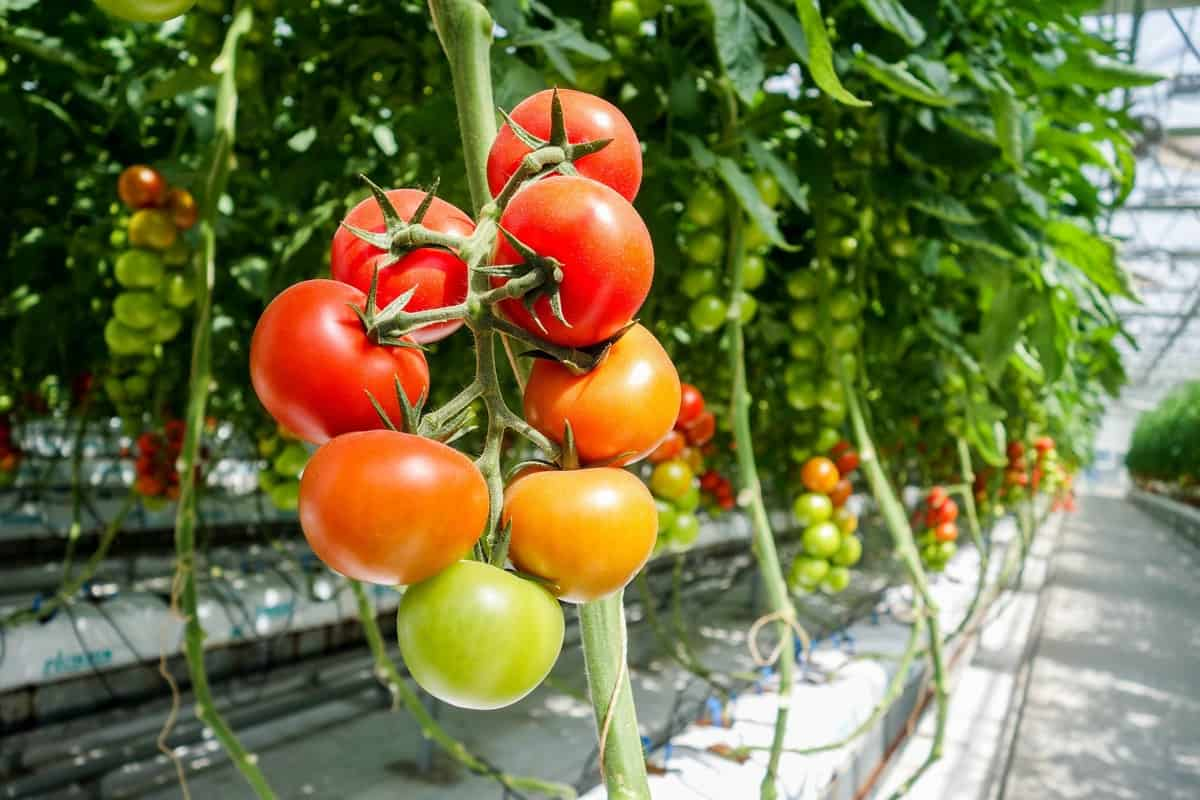
Despite these challenges, there are different opportunities for greenhouse farming in Nigeria. The country has a large population with a growing demand for fresh vegetables and fruits. Nigerians also have an increasing awareness of the benefits of eating fresh produce. If more farmers can overcome the challenges associated with greenhouse farming, they will be able to provide Nigerians with healthy, fresh food all year round.
Greenhouse problems in Nigeria
Greenhouse problems in Nigeria include high initial costs, lack of technical knowledge, and unreliable power and water supplies. Greenhouse farming can be an important tool for smallholder farmers in Nigeria, but these farmers face significant challenges in adopting the technology. Lack of technical knowledge is another challenge faced by smallholders interested in greenhouse farming.
Commercial greenhouses are typically operated using sophisticated equipment and materials that are not widely available in Nigeria. As a result, smallholders often do not have the necessary skills or resources to construct and maintain a greenhouse. Unreliable power and water supplies are also major hurdles for smallholder farmers attempting to adopt greenhouse agriculture.
Power outages in many parts of Nigeria are common, making it difficult to operate irrigation systems and other farm equipment. Even when power is available, it is often too expensive for smallholders to use regularly. Similarly, water shortages are a frequent problem in Nigeria, making it difficult to irrigate crops effectively.
Conclusion
The climate in Nigeria is tropical, with hot and humid weather year-round. This climate is well suited for greenhouse farming as long as the greenhouses are designed to withstand high winds and heavy rains. Greenhouse farming allows for year-round crop production, which is beneficial in a country like Nigeria, where the climate can be unpredictable. Crops grown in a greenhouse are also protected from pests and diseases, which can wreak havoc on traditional farms.
- Types of Pesticides Used in Agriculture: A Beginner’s Guide
- Economical Aquaculture: A Guide to Low-Budget Fish Farming
- 15 Common Planting Errors That Can Doom Your Fruit Trees
- How to Make Houseplants Bushy: Effective Tips and Ideas
- Innovative Strategies for Boosting Coconut Pollination and Yield
- Pollination Strategies for Maximum Pumpkin Yield
- The Complete Guide to Chicken Fattening: Strategies for Maximum Growth
- Natural Solutions for Tulip Problems: 100% Effective Remedies for Leaf and Bulb-Related Issues
- Revolutionizing Citrus Preservation: Towards a Healthier, Greener Future
- Natural Solutions for Peony Leaf and Flower Problems: 100% Effective Remedies
- Maximizing Profits with Avocado Contract Farming in India: A Comprehensive Guide
- Natural Solutions for Hydrangea Problems: 100% Effective Remedies for Leaf and Flowers
- The Ultimate Guide to Choosing the Perfect Foliage Friend: Bringing Life Indoors
- From Sunlight to Sustainability: 15 Ways to Use Solar Technology in Agriculture
- The Ultimate Guide to Dong Tao Chicken: Exploring from History to Raising
- The Eco-Friendly Makeover: How to Convert Your Unused Swimming Pool into a Fish Pond
- Mastering the Art of Delaware Chicken Farming: Essentials for Healthy Backyard Flocks
- 20 Best Homemade Fertilizers for Money Plant: DIY Recipes and Application Methods
- How to Craft a Comprehensive Free-Range Chicken Farming Business Plan
- Brighten Your Flock: Raising Easter Egger Chickens for Beauty and Bounty
- How to Optimize Your Poultry Egg Farm Business Plan with These Strategies
- Subsidy for Spirulina Cultivation: How Indian Government Schemes Encouraging Spirulina Farmers
- Ultimate Guide to Raising Dominique Chickens: Breeding, Feeding, Egg-Production, and Care
- Mastering the Art of Raising Jersey Giant Chickens: Care, Feeding, and More
- Ultimate Guide to Raising Legbar Chickens: Breeding, Farming Practices, Diet, Egg-Production
- How to Raise Welsummer Chickens: A Comprehensive Guide for Beginners
- How to Protect Indoor Plants in Winter: A Comprehensive Guide
- Ultimate Guide to Grow Bag Gardening: Tips, Tricks, and Planting Ideas for Urban Gardeners
- Guide to Lotus Cultivation: How to Propagate, Plant, Grow, Care, Cost, and Profit
- Agriculture Drone Subsidy Scheme: Government Kisan Subsidy, License, and How to Apply Online
- Ultimate Guide to Raising Araucana Chickens: Breed Profile, Farming Economics, Diet, and Care
- Bringing Hydroponics to Classroom: Importance, Benefits of Learning for School Students
- Ultimate Guide to Raising Polish Chickens: Breed Profile, Farming Economics, Diet, and Care
- Ultimate Guide to Raising Australorp Chickens: Profile, Farming Economics, Egg Production, Diet, and Care
- Silkie Chicken Farming: Raising Practices, Varieties, Egg Production, Diet, and Care
- Sussex Chicken Farming: Raising Practices, Varieties, Egg Production, Diet and Care
Very rich information.
I am interested in starting a greenhouse. How do I get a guide or a reliable consultant to partner with?
Hi,
I appreciate the information on this site. Though it’s written in 2022, but I’m optimistic there’s little or no changes at all.
I have about 14 plots of land around Epe, Lagos that I’m looking to use for integrated farming and I will certainly be needing a greenhouse that I can afford.